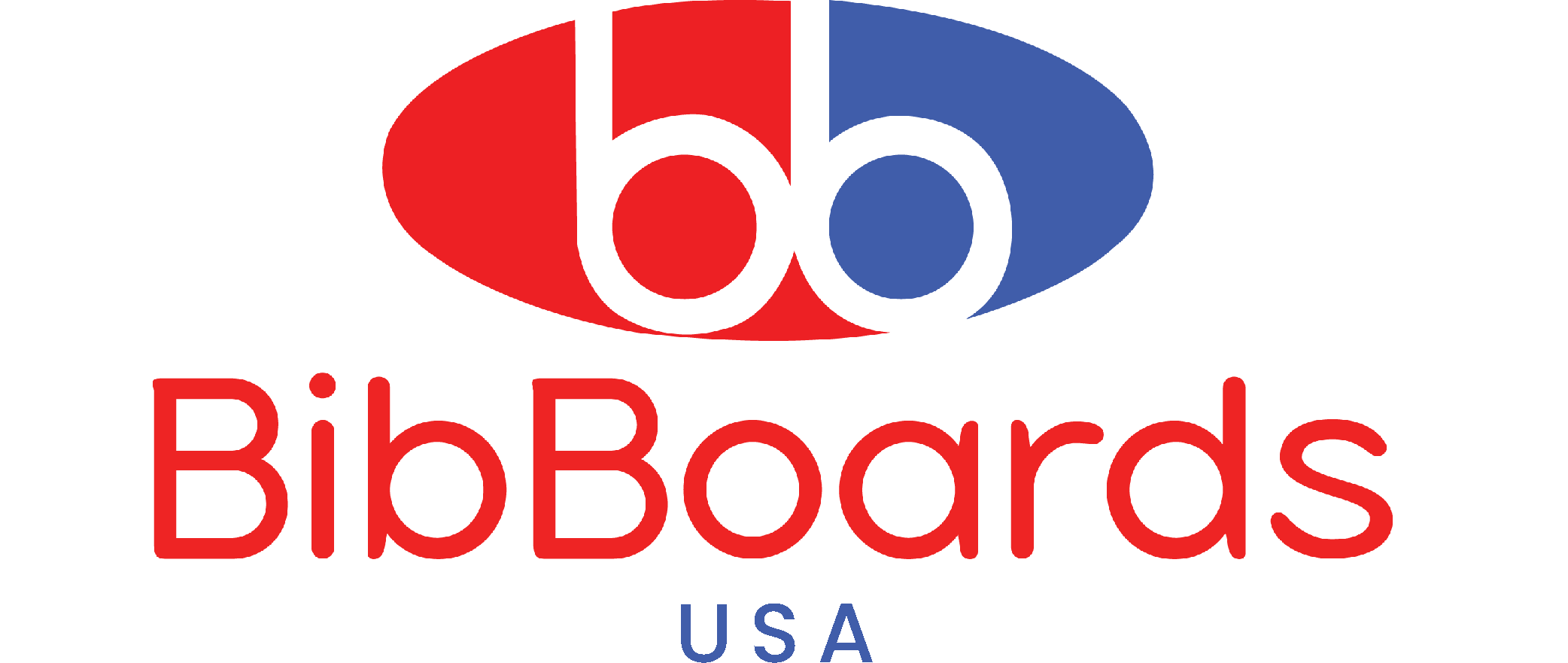Key Takeaways:
- Preparation Matters: A well-structured plan provides a balanced mix of running, cross-training, and rest, essential for beginners to build stamina and avoid injuries.
- Nutrition and Hydration: Fueling your body with carbs, protein, and electrolytes supports your training needs and enhances recovery, especially after long runs.
- Taper for Success: Tapering before race day is crucial to feeling refreshed, allowing muscles to recover fully, and reducing the risk of burnout during the race.
At BibBoards, we provide innovative, reusable snap-on fasteners as an alternative to safety pins for securing race bibs without damaging clothing. With our expertise, we’ve crafted resources that support athletes of all levels in reaching their full potential.
What’s the best way to tackle the challenge of a half marathon as a beginner? Starting can feel overwhelming with 13.1 miles to cover, but with the proper guidance, you can reach that finish line confidently.
In this piece, we’ll walk you through an ideal beginner’s training plan, giving you all the tools to start strong and finish stronger.
Why Train For A Half Marathon?
Training for a half marathon offers more than just a fitness boost; it’s a goal that challenges both body and mind. Each mile strengthens your endurance, builds resilience, and improves cardiovascular health. This training pushes you to develop discipline and consistency, key traits that benefit all areas of life.
Aside from the physical benefits, a half marathon gives structure to your fitness journey, making each run a step toward a meaningful accomplishment. It’s an ideal challenge for those wanting to push beyond regular workouts, offering a sense of purpose and achievement. Embracing the training turns routine runs into something extraordinary, creating a transformative experience.
For a seamless and sustainable race day experience, consider using BibBoards.These reusable bib fasteners keep your race bib securely in place without damaging your clothing, making them a great addition for marathoners looking to go the extra mile.

Getting Started: What To Know Before You Begin
Starting a half marathon training plan involves understanding the basics and preparing properly. Building a strong foundation and making necessary lifestyle adjustments are essential for beginners. Here’s what to know before you lace up your shoes:
Assess Your Current Fitness Level
Understanding your fitness baseline is crucial for developing a sustainable training routine. Start by reviewing your current mileage and running frequency; ideally, you should comfortably handle a 3-5 mile run. Building this foundation will make it easier to add miles gradually and reduce the risk of injuries from overexertion.
Consult A Healthcare Professional
Starting a half marathon training plan can be a big step, especially if you’re new to distance running. Scheduling a check-up with a healthcare provider helps identify any potential concerns, such as joint health or cardiovascular issues. This proactive measure ensures that your body is ready for the challenge and supports you in training safely.
Plan Your Schedule And Goals
Commitment to a consistent training plan is essential for any half marathoner. Set aside 12-16 weeks for structured training, allowing time for recovery between runs. Establishing specific goals, like weekly mileage targets or personal time objectives, can keep you motivated and focused on your progress.
Invest In The Right Gear
Proper running gear, particularly shoes, is essential to prevent injuries and improve comfort during training. Visit a specialty running store for a gait analysis, which helps you find shoes suited to your running style. Additionally, moisture-wicking clothing and comfortable socks can reduce friction and make training more enjoyable.
Find A Support System
Training with others, whether friends, a local running club, or an online community, provides encouragement and accountability. A support system can help you stay on track, celebrate your progress, and share tips or advice. Having someone to share the journey with often makes the experience more rewarding and enjoyable.
Essential Gear For Beginners
The right gear can make your training smoother, safer, and more comfortable. For beginner runners, investing in proper footwear and supportive attire is vital to a successful half marathon journey. Here’s a breakdown of the most essential gear:
Running Shoes
Proper running shoes are non-negotiable and can make or break your training experience. Visit a specialty store for a gait analysis, which will help you find shoes that fit your running style and prevent injuries. Quality running shoes should provide support, cushioning, and durability to carry you through each mile comfortably.
Moisture-Wicking Clothing
Wearing moisture-wicking shirts, shorts, and socks helps keep sweat at bay, reducing chafing and improving overall comfort. Lightweight, breathable materials keep you cool and dry, even on longer runs. Avoid cotton, as it tends to hold moisture and can lead to skin irritation and discomfort.
Running Watch Or Fitness Tracker
A running watch or fitness tracker helps you monitor your pace, distance, and heart rate, giving you essential data to track progress. Many watches now offer GPS tracking, which can help map your runs and assess performance over time. This insight can be motivating and useful as you adjust your training to meet weekly goals.
Hydration Gear
Staying hydrated is critical, especially during longer runs, so consider hydration belts or handheld water bottles. A hydration belt allows you to carry water comfortably without disrupting your pace. Some belts come with storage pockets for essentials like keys or gels for added convenience.
Anti-Chafing Balm
As you increase mileage, the risk of chafing rises, making an anti-chafing balm a wise investment. Apply it to areas prone to friction, such as underarms, thighs, and feet, to avoid discomfort during your run. This small addition can make a big difference in keeping you comfortable throughout training.
The Ultimate 12-Week Half Marathon Training Plan
A structured 12-week plan is ideal for beginners, providing a gradual build-up to the half marathon distance. With a balance of long runs, recovery days, and cross-training, this plan keeps your progress steady without risking burnout. Here’s a breakdown of each training phase:
Weeks 1-4: Building A Base
In the first four weeks, focus on establishing a consistent running schedule with short, manageable distances. Start with three running days weekly, adding a rest day after each workout. Aim to gradually increase your long run by about a mile each week to prepare your body for longer distances.
Weeks 5-8: Increasing Mileage
During the middle phase, you’ll begin to extend your running distances and incorporate some tempo runs to improve endurance. Aim for one long run, one short recovery run, and a moderate-paced run each week. This period is about gradually building endurance, with the long run reaching about 7-8 miles by the end of Week 8.
Weeks 9-12: Fine-Tuning And Tapering
As race day approaches, you’ll begin tapering, reducing mileage to conserve energy. Continue with long runs, but cut back on distance in the final two weeks to allow your body to recover. Maintain light, easy-paced runs and focus on keeping your body fresh and prepared for race day.
Cross-Training And Recovery Tips
Cross-training and proper recovery are crucial to avoid burnout and prevent injuries while building strength. Incorporating different forms of exercise into your weekly routine helps balance muscle use and keeps training engaging. Here’s how to make the most of cross-training and recovery:
Incorporate Strength Training
Strength training, focusing on the legs, core, and upper body, can improve stability and endurance. Aim for two sessions per week, using exercises like lunges, squats, and core work to target muscles that support running. This added strength helps improve posture and efficiency, especially on longer runs.
Try Low-Impact Cardio
Low-impact cardio activities like cycling, swimming, or using an elliptical machine offer cardio benefits without straining joints. These activities allow you to build cardiovascular endurance without the impact of running, making them ideal on “easy” or recovery days. By engaging different muscles, low-impact cardio supports full-body strength and endurance.
Prioritize Rest And Recovery
Rest days are as essential as training days in any half marathon plan. Taking at least one full day off each week allows your muscles to repair and grow stronger. Incorporate stretching, foam rolling, and even occasional yoga to enhance flexibility and reduce muscle tightness, keeping you fresh for your next run.
Nutrition For Half Marathon Training
Fueling your body correctly supports your energy needs and maximizes performance during half marathon training. Proper nutrition enhances recovery, maintains stamina, and prepares your body for long runs. Here are some essential nutritional tips to follow:
Prioritize Carbohydrates For Energy
Carbohydrates are the primary energy source for runners, helping fuel your muscles for long-distance training. Focus on complex carbs like whole grains, fruits, and vegetables to provide steady energy without blood sugar spikes. Aim to incorporate carbs into each meal, especially on days leading up to long runs.
Include Lean Proteins For Muscle Repair
Protein is vital for muscle repair and recovery, supporting your body after tough workouts. Lean protein sources like chicken, fish, beans, and tofu help rebuild muscle fibers and reduce soreness. Consuming protein-rich snacks or meals within 30 minutes post-run is ideal for effective recovery.
Stay Hydrated And Replenish Electrolytes
Hydration is critical, as even mild dehydration can affect endurance and performance. Drink water consistently throughout the day, and consider electrolyte drinks after long runs to replace sodium and potassium lost in sweat. Electrolytes help maintain balance and prevent cramping on particularly hot days or long runs.
Race Day Tips For First-Time Half Marathon Runners
After weeks of preparation, race day is your time to shine! A few simple tips can help you manage pre-race nerves, stay comfortable, and make the most of your experience. Here’s how to approach your first half marathon with confidence:
Stick To Your Usual Routine
Race day is not the time for new gear, foods, or pacing strategies. Stick with tried-and-true meals, wear your tested gear, and follow the warm-up routine you’ve used throughout training. This familiarity helps calm nerves and prevents surprises on the course.
Start At A Comfortable Pace
Adrenaline can make it tempting to start fast, but it’s crucial to pace yourself. Begin at a steady, comfortable pace that matches your training runs; you can increase speed later if you feel strong. Conserving energy in the first half of the race gives you the stamina to finish strong.
Stay Hydrated And Fuel Throughout
Carry a small water bottle or use designated hydration stations, taking small sips to avoid dehydration. If you’ve practiced with energy gels or snacks, consume them as planned to maintain energy. Staying consistent with hydration and fueling will energize you for 13.1 miles.
Prepare The Night Before
Set out everything you’ll need for the race, including clothes, shoes, race bib, and any nutrition or hydration items. Planning ahead prevents last-minute stress and helps you get a restful sleep. Make sure to double-check weather conditions and adjust your gear as needed.
Warm Up And Stretch
Arriving early to the race site gives you time to warm up and get comfortable. A light jog and dynamic stretches prepare your muscles and help calm pre-race jitters. This warm-up routine is especially helpful for preventing muscle stiffness and setting the pace for the start of the race.
Embrace The Experience
Remember, your first half marathon is a major accomplishment, so enjoy the experience! Take in the atmosphere, the crowd’s energy, and the scenery along the course. Staying positive and soaking in the excitement can help you push through any difficult miles and finish with pride.

Final Thoughts
Taking on a half marathon as a beginner is more than just a race; it's a journey that challenges personal limits and builds resilience. This experience goes beyond physical endurance, requiring mental commitment and a steady approach. Training for a half marathon offers the chance to push yourself in new ways, creating a structured path toward a significant goal. It’s an endeavor that cultivates discipline, strength, and a sense of pride in what both body and mind can accomplish.
For many, completing a half marathon sparks a newfound appreciation for running, often leading to future goals and deeper engagement in a fitness routine. Along the way, runners build lasting habits, discover the importance of pacing, and find support within the running community. With the right mindset and preparation, a half marathon becomes more than a finish line—it’s an opportunity to develop a lifestyle centered around health, endurance, and personal growth.
Frequently Asked Questions About Half Marathon Training Plans
What is a half marathon training plan?
A half marathon training plan is a structured schedule designed to help runners gradually build the strength, stamina, and endurance needed to complete a 13.1-mile race. It typically includes running workouts, cross-training, and rest days to ensure balanced preparation.
How long should beginners train for a half marathon?
Beginners typically benefit from a 12 to 16-week training plan. This timeframe allows for a gradual increase in mileage and intensity, reducing the risk of injury and improving endurance.
Do I need specific gear for half marathon training?
Yes, proper running shoes and moisture-wicking clothing are essential for comfort and injury prevention. Beginners may also benefit from a hydration belt, running watch, and anti-chafing balm.
What types of runs are included in a half marathon training plan?
Training plans often include long runs to build endurance, shorter recovery runs, and tempo runs for speed. These runs vary in distance and intensity to build a runner’s overall performance.
How important is cross-training for half marathon prep?
Cross-training helps improve overall fitness, prevent injuries, and maintain motivation. Low-impact activities like swimming or cycling can complement running by strengthening different muscle groups.
What should I eat during half marathon training?
A balanced diet with complex carbs for energy, lean proteins for muscle repair, and adequate hydration is essential. Electrolytes are also necessary after longer runs to replenish lost minerals.
Can beginners train for a half marathon alone?
Absolutely! While some enjoy the support of a running group, many beginners successfully train alone by following a structured plan and staying motivated. Online communities can also offer encouragement and advice.
What is tapering, and why is it important?
Tapering involves reducing mileage in the final weeks before the race to allow muscles to recover fully. This helps runners feel fresh and energized on race day, reducing the risk of burnout.
Is strength training necessary for half marathon training?
Strength training builds muscles that support running posture and reduce injury risks. Exercises targeting the core, legs, and glutes help enhance stability and endurance.
How can I stay motivated during half marathon training?
Setting mini-goals, joining running groups, and visualizing race day success are effective ways to stay motivated. Tracking progress with a fitness app can also provide encouragement and insights.




Leave a comment
This site is protected by hCaptcha and the hCaptcha Privacy Policy and Terms of Service apply.